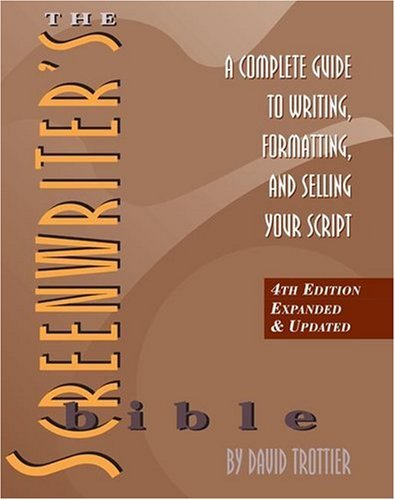How does a spec script differ from a shooting script? What kind of fasteners should one use to bind a script? How did the term MOS come to mean without sound? You'll find the answers to these pressing questions and much more in David Trottier's eminently usable Screenwriter's Bible. The avuncular Trottier--a writer-producer, script consultant, and seminar leader--has written a friendly guide through the Hollywood morass. He touts it as six books in one: it's "a screenwriting primer, a screenwriting workbook, a formatting guide, a spec writing guide, a sales and marketing guide, [and] a resource guide." Much of Trottier's advice is common sense: "Don't write anything that cannot appear on the screen"; to keep casting options open, don't make your physical descriptions too specific; "don't say Ron Howard is looking at the project if he is not." But there are things to know about Hollywood that are, well, quirkier. Don't write the title of your script on the front cover or side binding; present action sequences using the "stacking action" style; in query letters and scripts alike, avoid "big blocks of black ink." Trottier's guidance--from character development and revision to queries and pitches--is invaluable. Getting in the door can seem impossible, but it's not, necessarily. "If you write a script that features a character who has a clear and specific goal," says Trottier, "where there is strong opposition to that goal leading to a crisis and an emotionally satisfying ending, your script will automatically find itself in the upper five percent." (By the way, MOS is said to have "originated with German director Eric von Stroheim, who would tell his crew, 'Ve'll shoot dis mid out sound'"). --Jane Steinberg
Authors
David Trottier
Additional Info
- Release Date: 2005-09
- Publisher: Silman-James Press
- Format: Paperback
- ISBN: 9781879505841
| SKU |
Condition |
Store |
Shelf |
Price |
|
| 6008190 |
Very Good
|
Warehouse |
49-3-6 |
$7.99 |
Add to Cart |
